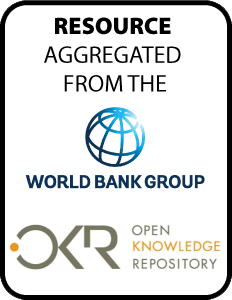Resource information
Since the early 2000s, Tanzania has seen
remarkable economic growth and strong resilience to external
shocks. Yet these achievements were overshadowed by the slow
response of poverty to the growing economy. Until 2007, the
poverty rate in Tanzania remained stagnant at around 34
percent despite a robust growth at an annualized rate of
approximately 7 percent. This apparent disconnect between
growth and poverty reduction has raised concerns among
policy makers and researchers, leading to a consensus that
this mismatch needed to be addressed with a sense of
urgency. Over the past few years, the National Strategy for
Growth and Reduction of Poverty (MKUKUTA) in Tanzania has
given high priority to eradicating extreme poverty and
promoting broad-based growth. Achieving pro-poor growth has
also been widely recognized by the World Bank as a critical
strategy for accelerating progress toward its twin goals of
eliminating extreme poverty at the global level by 2030 and
boosting shared prosperity by fostering income growth among
the bottom 40 percent in every country. The official poverty
figures announced by the government in November 2013 have
revealed that the national strategy against poverty has
begun to facilitate reductions. The basic needs poverty rate
has declined from around 34 percent to 28.2 percent between
2007 and 2012, the first significant decline in the last 20
years. Identifying the policy mechanisms that have helped to
increase the participation of the poor in the growth process
and to speed pro-poor growth is therefore important for
present and future decision-making in Tanzania on how best
to eradicate poverty. Such task requires a rigorous analysis
of the evolution of poverty and of the linkages between
poverty, inequality, and economic growth. This report uses
the availability of the new Tanzanian Household Budget
Survey (HBS) for 2011 and 2012, as well as the new rebased
GDP figures released in December 2014, as an opportunity to
address these issues. More specifically, the report examines
the recent trends in poverty and inequality and their
determinants and explores how responsive poverty reduction
was to economic growth and the obstacles to achieving it.


